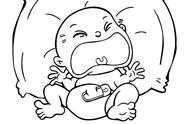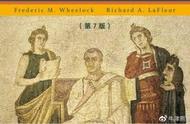小学英语四年级上册知识总结
单词部分
- 黑体单词。(要求:听、说、认读、规范书写)
- 其他单词。(要求:听、说、认读)
Unit1 | |||
单词 | 中文 | 相关知识点 | |
黑体单词 | subject | 科目,课程 | 学科的总称,与具体某一学科不属于同一类,如subject和Chinese不属于同一类。 |
we | 我们 | 和“I”(我),“my”(我的)区分 | |
Chinese | 汉语,中文,中国的 | 首字母大写 | |
PE | 体育 | 两个字母都大写 | |
science | 科学 | ||
English | 英语 | 首字母大写 | |
maths | 数学 | 注意“th”的发音,要咬舌尖 | |
favourite | 最喜爱的 | 注意字母“v”和“r”在书写上的区分 | |
make | 制造,做 | 注意字母k的书写 | |
today | 今天 | 与tomorrow(明天)区分开 | |
often | 经常,常常 | 注意第一个字母“o”的发音 | |
basketball | 篮球 | 注意字母k的书写 | |
there | 那里,那儿 | 与here(这里,这儿)区分开 | |
其他单词 | classmate | 同班同学 | |
computer studies | 计算机课 | computer指计算机,这个短语也表示一门学科 | |
thing | 物,东西 | 记住短语make things | |
Unit2 | |||
单词 | 中文 | 相关知识点 | |
黑体单词 | run | 抛;奔跑;跑步 | “-ing”形式为“running”,双写字母“n”加“ing” |
come | 来,来到 | “-ing”形式为“coming”,去“e”加“ing” | |
dance | 跳舞 | “-ing”形式为“dancing”,去“e”加“ing” | |
well | 好,令人满意地 | 加在动词或动词短语后面,表示“(做)...的好”如sing well唱得好;play basketball well 篮球打得好 | |
uncle | 叔;伯;舅;姑父;姨夫 | 属于家庭成员类,与“aunt”相对应 | |
aunt | 婶;姑;姨;伯母;舅母 | 属于家庭成员类,与“uncle”相对应 | |
cook | 烹调,做饭;厨师 | 两个词性,作动词,烹饪,做饭;作名词,厨师。“-ing”形式为“cooking” | |
其他单词 | skip | 跳绳 | “-ing”形式为“skipping”,双写字母“p”加“ing” |
piano | 钢琴 | 弹钢琴play the piano,“ing”形式为playing the piano | |
drum | 鼓 | 一个鼓drum,两个及两个以上drums,打鼓play the drum(s) | |
hobby | 业余爱好;嗜好 | “爱好”的总称,与具体活动不属于同一类 | |
paper cutting | 剪纸 | 动名词,表示“剪纸”这项活动, | |
Unit3 | |||
单词 | 中文 | 相关知识点 | |
黑体单词 | day | (一)日,(一)天;白天 | |
football | 足球 | play football踢足球,与play basketball(打篮球)词义区分开。 | |
picture | 图片,照片 | 短语draw pictures中picture后面要加“s”,表示复数,如果是单数,表达为draw a picture | |
其他单词 | Monday | 星期一 | 1.“星期”首字母都要大写。 2.区分Tuesday和Thursday的词义。 3.区分Saturday和Sunday的词义 3.“在星期几”用介词on加星期,如“在星期一 on Monday”。 |
Tuesday | 星期二 | ||
Wednesday | 星期三 | ||
Thursday | 星期四 | ||
Friday | 星期五 | ||
Saturday | 星期六 | ||
Sunday | 星期日 | ||
hurry up | 赶快,快点 | ||
Unit4 | |||
单词 | 中文 | 相关知识点 | |
黑体单词 | season | 季;季节 | 季节的总称 |
year | 年 | In a year在一年中 | |
spring | 春天;春季 | 在某个季节里,用介词in, in spring/summer/autumn/winter 在春天/夏天/秋天/冬天 | |
summer | 夏天;夏季 | ||
autumn | 秋天;秋季 | ||
winter | 冬天;冬季 | ||
warm | 暖和的,温暖的 | 1.气温特点与季节相对应。 2.区分cool和cold的词义 | |
hot | 热的 | ||
cool | 凉的,凉爽的 | ||
cold | 寒冷的 | ||
wear | 穿,戴 | ||
Jacket | 夹克衫,短上衣 | Jacket是短上衣,与coat(外套)区分开 | |
fly | 飞,飞行;放(风筝等) | fly a/my kite放风筝 | |
kite | 风筝 | ||
swim | 游泳 | 去游泳go swimming(swim要双写词尾字母m再加ing。) | |
白体单词 | T-shirt | T恤衫 | T和shirt之间有连字符,不要忘。与shirt(衬衫)区分开 |
what about | (征求意见或询问消息时用)怎么样 | What about you?你呢? What about Li Ming?李明呢? | |
skate | 溜冰,滑冰 | 去滑冰go skating,与go swimming形式相同,其中skate要去掉字母e,再加ing。 | |
Unit5 | |||
单词 | 中文 | 相关知识点 | |
黑体单词 | weather | 天气 | 天气的总称 |
sunny | 晴朗的,阳光充足的 | 形容词,It’s sunny./It will be sunny. | |
cloudy | 多云的,阴天的 | 形容词,It’s cloudy./It will be cloudy | |
windy | 有风的,多风的 | 形容词,It’s windy./It will be windy. | |
snow | 雪;下雪 | 名词:雪;动词:下雪 It’s snowing./It will snow.(下雪) | |
rain | 雨;下雨 | 名词:雨;动词:下雨 It’s raining./It will rain.(下雨) | |
sorry | 对不起,抱歉 | ||
dad | (口语)爸爸 | 正式表达:father | |
tomorrow | 明天 | 与today区分开 | |
白体单词 | climb | 爬,攀登 | climb the hill/wall/tree... 爬山/墙/树... |
hill | 小山,丘陵 | hill小山,mountain高山,两个单词要区分开 | |
put on | 穿上,戴上 | put on除了表示“穿上”,还可以表示“戴上”,如put on your hat戴上你的帽子 | |
raincoat | 雨衣 | ||
will | 将,会(表示将来) | ||
shall | 将,会(表示将来) | Shall we ...?让我们去做某事好吗? | |
can’t | (can not的缩写)不能 | 肯定表达can,I can swim.我会游泳。 否定表达餐厅,I can’t swim.我不会游泳。 | |
Unit6 | |||
单词 | 中文 | 相关知识点 | |
黑体单词 | strong | 强壮的 | |
tall | 高的 | 反义词short(矮的) | |
long | 长的 | 反义词short(短的) | |
short | 短的;矮的 | 使用时要区分两个含义 | |
hair | 头发 | long hair长发,short hair短发 | |
parent | 父亲,母亲 | parent指一方,父母亲是parents | |
work | 作品,著作,工作 | 第三人称单数形式works | |
nurse | 护士 | 区分护士和医生的图片,通常打针的表示护士 | |
hospital | 医院 | 她在一所医院工作。She works in a hospital. | |
park | 公园 | ||
白体单词 | has | 有(动词have的第三人称单数) | 用在第三人称单数的人称代词后,或一个人名后:He/She/It has ... Jenny has ... |
businessman | 商人;企业家 | 记忆单词方法: business(商业) man(人;男人) 拓展:business(商业) woman(女性) | |
policeman | 警察 | 记忆单词方法: police(警察) man(人;男人) 拓展:police(警察) woman(女性) | |
gardener | 园丁,园林工人 | garden(花园) er——gardener teach(教,教授) er——teacher | |
cute | 可爱的 | ||
Unit7 | |||
单词 | 中文 | 相关知识点 | |
黑体单词 | speak | 说;谈话 | speak to和某人讲话 |
call | 喊,叫;打电话给(某人) | “-ing”形式为“calling” | |
write | 写,写字;写信 | “-ing”形式为“writing”,去掉词尾字母“e”,再加“ing” | |
电子邮件 | an email,email首字母是元音字母,所以前面用an | ||
jump | 跳 | high jump跳高 long jump跳远 | |
high | 高的 | ||
白体单词 | may | 可以 | May I ...?我可以...吗? |
hold on | 等一等(别挂电话) | 电话用语 | |
do some training | 训练 | train的“ing”形式“training” | |
sure | (口语)的确,一定,当然 | ||
everyone | 每人,人人 | every每一的,每个的,one一个 | |
winner | 获胜者 | ||
long jump | 跳远 | 名词短语,指“跳远”这个项目,进行跳远这个项目可以说“do the long jump” | |
high junp | 跳高 | 名词短语,指“跳高”这个项目,进行跳高这个项目可以说“do the high jump” | |
come on | 来吧,赶快,加油 | ||
句型部分及知识点
Unit1 School life
1.What subjects do we have this afternoon?今天下午我们有什么课?
subject要用复数形式“subjects”,表示“不确定有几节课”,或者“不只一节课”
拓展:What subjects do we/you have this morning/today/tomorrow./on Monday?
回答:We have Chinese and PE. 我们有语文和体育。
句型:We/I have 学科 表示“我们/我有(什么课)”
2.What’s your favourite subject?你最喜欢的学科是什么?
回答方式:
(1)It’s science.(It’s ...)
(2)I like maths.(I like ...)
(3)My favourite subject is English.(My favourite subject is ...)
(4)Chinese.(直接回答学科)
拓展:What’s your favourite animal/colour/day/season/food/drink/number/work...
(你最喜欢的动物/颜色/一天/季节/食物/饮料/数字/工作...是什么?)
3.区分this is和that is
This is the music room. 这里是音乐教室。
That’s the playground.(That is the playground.)那是操场。
4.We make things in the art room.我们在美术教室做手工。
句型:We/I ... in/on the... 我们在(哪里)做(某事)
例句:We sing in the music room.
We play football on the playground.(在操场上on the playground)
I read books in the bedroom.
5.区分here(这里)和there(那里)
We draw here. 我们在这里画画。
We play basketball there. 我们在那里打篮球。
6.Look at my new books. 看我的书。
短语:look at ... 看...
7.So many books! 这么多书!
many许多,后面的名词用复数形式。
8.What subjects do you have at school?
在学校at school
9.I have Chinese,maths and English in the morning. 上午我有语文、数学和英语。
在上午in the morning.
在下午in the afternoon
Unit2 Hobbies
1.Do you like basketball/playing basketball?你喜欢篮球吗?
句型:Do you ... ?
回答:Yes,I do.
No,I don’t.
2.like句式
(1)I like basketball. 我喜欢篮球。
(2)She likes dancing. 她喜欢跳舞。
(3)He likes playing the piano.他喜欢弹钢琴。
(4)Danny likes playing the drums. 丹尼喜欢打鼓。
句式:
(1)I like ...
(2)He/she/it/人名 likes(likes是like的第三人称单数形式,因为前面的“he/she/it/人名”是第三人称,且为单数,所以like要变likes。)
知识点:like 名词/动词“-ing”形式
(3)常见动词“ing”形式
单词 | 动词“-ing”形式 | 单词 | 动词“-ing”形式 |
run | running | dance | dancing |
skip | skipping | swim | swimming |
play | playing | skate | skating |
read | reading | come | coming |
sing | singing | speak | speaking |
draw | drawing | call | calling |
do | doing | train | training |
cut | cutting | write | writing |
cook | cooking |
3.play the piano/erhu/drums 弹钢琴/拉二胡/打鼓
知识点:乐器前面要加the
拓展:球类前面不加the(如:play football/basketball)
4.He plays well.(plays是play的三单形式)
词义:well好,令人满意地
例:He sings well. 他唱的好。(sings是sing的三单形式)
She draws well. 她画的好。(draws是draw的三单形式)
Guo Yang plays football well. 郭阳踢足球踢得好。
5.What’s your hobby?你的爱好是什么?
回答:(1)My hobby is doing taijiquan.
My hobby is用法同like一样,后接动词时,动词要用“ing”形式。
如My hobby is dancing/cooking/reading/... .
- I like cooking.
Unit3 Days of the Week
1.What day is today?
回答:It’s Wednesday.
句式:It’s 星期
2.We have music on Wednesday.
知识点:在星期几:on 星期
例:on Monday在星期一
3.What subjects do you have on Tuesday?星期二你有什么课?
回答:We have ... (on Tuesday).
4.We can play football this afternoon. 今天下午我们能踢足球。
I can dance on Monday. 星期一我能跳舞。
句式:I/we can ... 时间 我们在(什么时间)能(做某事)
知识点:can 动词原形
can 能;会
反义词:can’t不能;不会
5.What do you do on Saturday/Sunday? 星期六(日)你会做什么事情?
回答:I/We often play football (on Saturday). 我(们)经常踢足球。
句式:I/We often 进行的活动
知识点:often 动词原形
例句:I often read books in the morning.
- It’s time for school. 到了上学的时间了。(该上学了。)
句式:It’s time for 名词
拓展:It’s time to 动词
例句:It’s time for breakfast. 到吃早饭的时间了。
It’s time to have breakfast. 到吃早饭的时间了。
Unit4 Seasons
1.We have four seasons in a year. 我们在一年中有四个季节。
in a year 在一年中
2.What season is it?这是什么季节?
回答:It’s spring/summer/autumn/winter.
3.It’s warm in spring./ It’s hot in summer./ It’s cool in autumn. / It’s cold in winter.
知识点:在什么季节:in 季节
4.We often wear sweaters (in spring). (在春天)我们经常穿毛衣。
wear 衣物 表示“穿着;戴着...”
5.What season do you like?
回答:I like spring/summer/autumn/winter.
6.What about you?你呢?
对上文的问题做相同的提问,避免重复。
例:A:What season do you like,B?
B:I like spring. What about you,C?
C:I like summer.
Unit5 Weather
1.天气的提问与描述
How’s the weather now/today? | How’s the weather tomorrow? | |
现在天气的表达 | 将来天气的表达 | |
It’s ... | It will 动词 | It will be 形容词 |
sunny (晴朗的) | (无) | sunny(形容词) |
cloudy (多云的) | (无) | cloudy(形容词) |
windy(有风的) | (无) | windy(形容词) |
raining(正在下雨) 拓展:rainy(下雨的) | rain(动词:下雨) | rainy(形容词:下雨的) |
snowing(正在下雪) 拓展:snowy(下雪的) | snow(动词:下雪) | snowy(形容词:下雪的) |
2.put on your ... 穿上/戴上你的...
例句:Put on your coat. 穿上你的外套。
3.Let’s go and climb the hill.
Let’s 动词原形
例句:Let’s go to achool./Let’s play football.
4.How’s the weather in Beijing?北京的天气怎么样?
在...城市:in 城市名称
5.Shall we go to the zoo?我们去动物园好吗?
提建议的两种方式:
Shall we ...?让我们去(做某事)好吗?
Let’s ... 让我们去...吧。
回答:OK.
Unit6 Family
1.My father has short hair. 我爸爸是短头发。
知识点:has是have的第三人称单数形式,因为前面的“my father”是第三人称,且为单数,所以后面用has。
例句:He has big eyes. 他有大大的眼睛。
She has red glasses. 她戴着红色的眼镜。
2.What does your mother do?*妈的工作是什么?
回答:She’s an art teacher.
句式:He/She/My father/Wang Hong/... is a/an 职业
例句:He’s a businessman.
She’s a teacher.
My mother is a nurse.
Wang Hong is a student.
3.She works in a hospital.
知识点:works是work的第三人称单数形式。
句式:He/She/... works in 地点 (某人在某地工作)
例句:She works in a school.
Unit7 Communications(交际)
1.This is Jenny speaking. 我是珍尼。(打电话时自我介绍)
句式:This is ... speaking.
2.May I speak to Li Ming?我可以找一下李明吗?(打电话用语)
speak to 和...讲话
May I have a look?我可以看一下吗?
have a look看一下
3.Hold on.等一等,别挂电话。(电话用语)
4.Jenny is calling. 珍尼正在打电话。
calling是call的“ing”形式,表示正在打电话。
5.coming正在过来,就要来了
例句:My parents are coming. 我的爸爸妈妈来了。
I’m coming. 我来了。
Sports Day is coming. 运动会就要来了。
- 现在进行时态
- 描述某人正在做某事
句式:主语 be动词 动词ing形式 其他(be动词包括am,is,are)
人称搭配:
人称 | be动词搭配 | 例句 | |
单数 | 第一人称:I(我) | I am | I am watching TV. 我正在看书。 |
第二人称:you(你) | you are | You are reading a book. 你正在读书。 | |
第三人称:he,she,it(他;她;它) | he/she/it is | He is playing football. 他正在踢足球。 She is playing the piano. 她正在弹钢琴。 It is climb the tree. 它正在爬树。 | |
复数 | 第一人称:we(我们) | we are | We are singing. 我们在唱歌。 |
第二人称:you(你们) | you are | You are drawing pictures. 你们在画画。 | |
第三人称:they (他们;她们;它们) | they are | They are playing basketball. 他们在打篮球。 |
(2)问答正在做某事
提问 | 回答 | 例句 | ||
第一 人称 | 我:I | What am I doing? 我在做什么? | You are 动词ing形式 (第一人称不常用) | What am I doing? You are reading. |
第二 人称 | 你,你们: you | What are you doing? 你(们)正在做什么? | I am 动词ing形式 (我) We are 动词ing形式 (我们) | What are you doing? I’m writing an email. |
第三 人称单数 | 他:he 她:she 它:it 人名 | What is he doing? 他正在做什么? What is she doing? 她正在做什么? What is it doing? 它正在做什么? | He is 动词ing形式 她正在... She is 动词ing形式 她正在... It is 动词ing形式 它正在... | What’s he doing? He’s singing. What’s she doing? She’s playing the piano. What is it doing? It’s climbing the tree. |
What is (某人)doing? (某人)正在做什么? | He/She is 动词ing形式 | What’s Guo Yang doing? He is running. What’s Wang Hong doing? She’s doing the long jump. | ||
第三人称复数 | 他/她/它们:they | What are they doing? 他/她/它们在做什么 | They are 动词ing形式 | What are they doing? They making things. |
字母语音部分
要求:了解以下字母在单词中的发音
辅音 字母 | b | big,bed,lab,job | m | my,milk,jump,room |
d | red,read,door,dance | n | ten,on,new,nose | |
f | fish,four,beef,roof | p | up,cap,pen,play | |
g | big,bag,girl,good | r | run,red,rice,rain | |
h | hot,hill,has,home | s | yes,this,sunny,snow | |
k | cook,book,kite,kitchen | t | let,at,ten,tell | |
l | like,look,leg,long | v | have,five,very,vegetable | |
元音 字母 | a | make,face,name,cake | a | apple,at,has,dad |
e | we,me,he,she | |||
i | kite,like,nice,time | i | in,it,six,big | |
o | go,no,nose,home | |||
u | up,run,sunny,Sunday |
英文字母规范书写表















